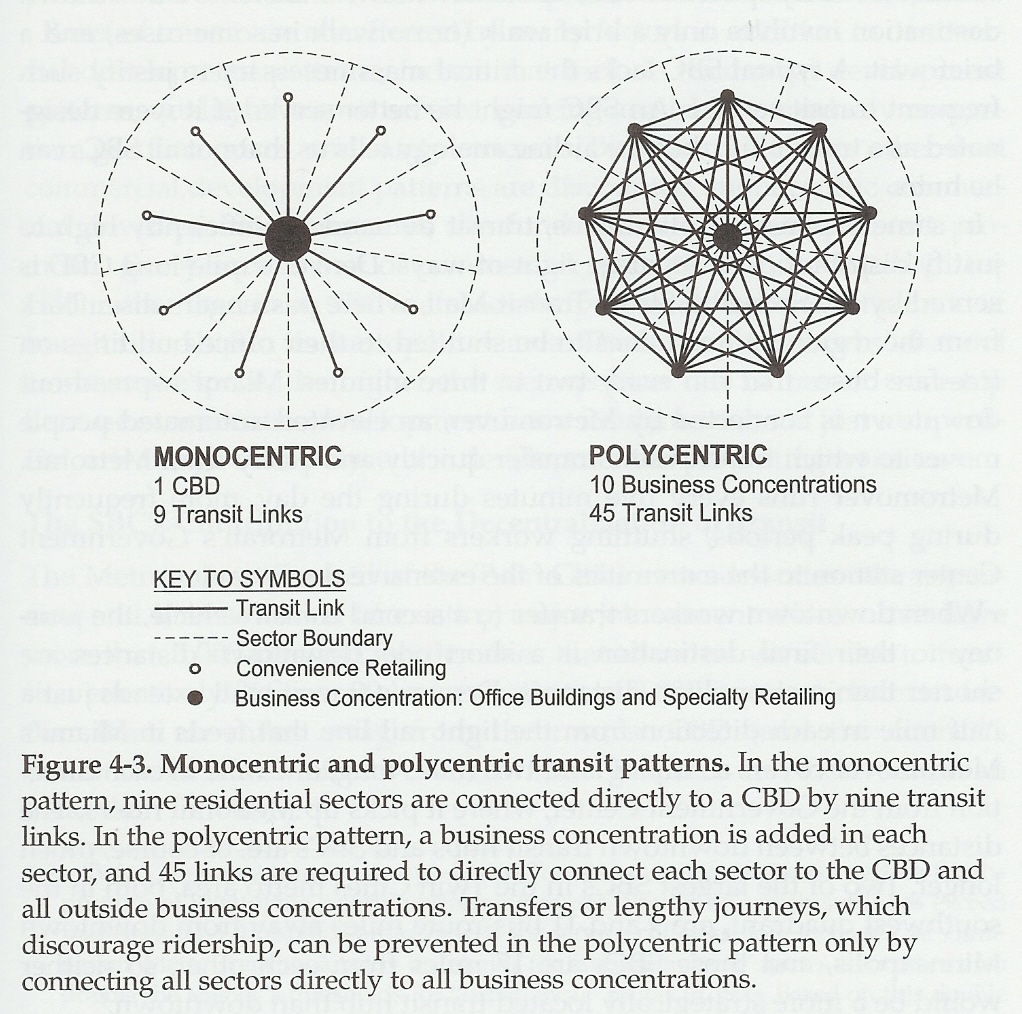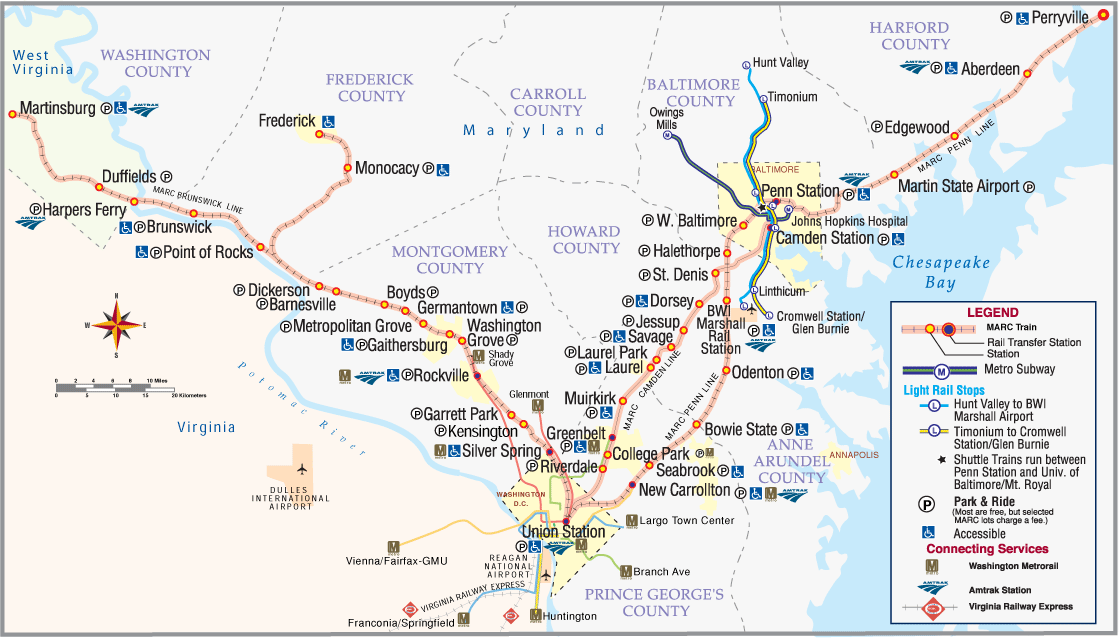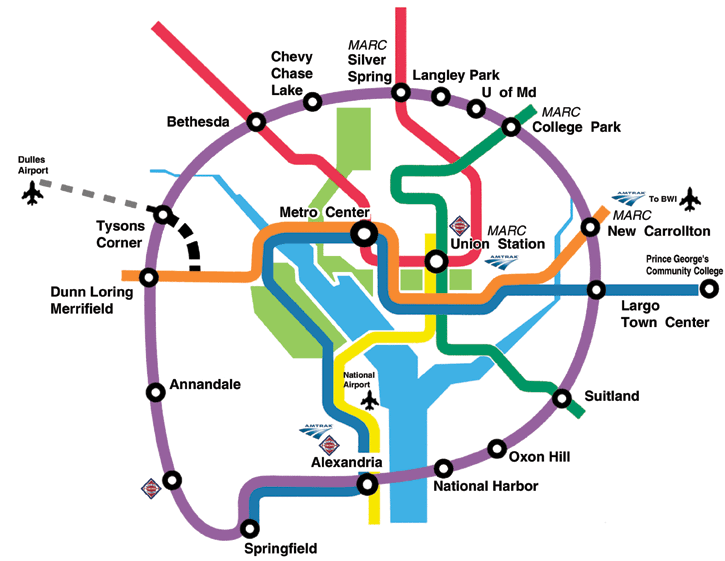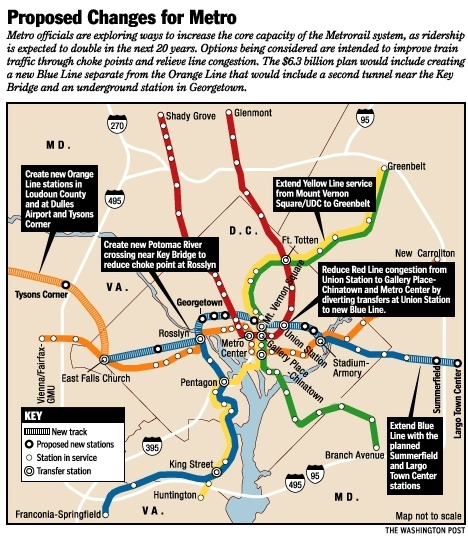Kaid Benfield at NRDC's Switchboard blog, has a post, "
A strong case for a rail- and transit-oriented California," that raises some interesting issues about scale of metropolitan and regional development. He calls our attention to research (
Charting our Future,
Vision California) and an op-ed, "
Why California needs high-speed rail," in the
San Francisco Chronicle by Peter Calthorpe that suggests that high speed rail can be the fulcrum to repattern land use in ways that intelligently allow the state to absorb a projected new residents.
From the blog entry:
The envisioned benefits would come from a “growing smart” scenario that would leverage the construction of a planned high-speed rail network with smart land use around and near the network's stations and additional intra-city transit systems. The scenario would include a more balanced housing mix, more infill development, and greater transportation options than under a business-as-usual scenario, which assumes a continuation of dispersed, auto-oriented development patterns (albeit with continued modest improvements in automobile, building, and energy generation efficiency). Even greater comparative benefits would be realized under a more ambitious “green future” alternative.In the 2009 entry, "
Second iteration, idealized national network for high speed rail passenger service," I discussed how transportation planning within the U.S. should occur on five distinct but interconnected levels:
- international (connections between countries);
- national (such as the Interstate Highway system or the proposed High Speed Rail Initiative);
- regional or multi-state (freeways sure but also railroads, such as passenger railroad service in NY, CT, NJ, and PA) [including inter-city bus service];
- metropolitan such as the subway and bus system for the Washington metropolitan region, which is anchored by the WMATA system and the VRE and MARC railroads; and is supplemented by
- submetropolitan transit networks at the suburban and city levels.
Interestingly, at the local level, I am often critical about attempts to do "transit oriented development" at commuter railroad stations in the greater region, because for the most part these stations are on the outskirts of their respective metropolitan areas, in areas where the land use pattern and context, from the standpoint of the New Urban transect, is not very dense (T2/T3).

Monocentric and polycentric transit patterns, from Belmont, Cities in Full.
A related issue is whether or not the railroad stations are in fact key elements of their local communities or disconnected pods used by people from elsewhere in the region. For example, while adjacent to the Arbutus community in Baltimore County, the highly used Halethorpe MARC railroad station is used not by residents from the immediate neighborhood, but people who drive to the station from around the metropolitan area who appreciate that the station is easily accessible from the Baltimore Beltway (I-695).
If you were to develop Halethorpe intensively for "smart growth" reasons, the desired impact likely would not occur, because the land use around the station is low density single family residential, with a small town center.
Transect diagram.
Calthorpe outlines the difference in development paradigms in his op-ed:
Transit-oriented development built around high-speed rail and local transit would be denser. Detached single-family homes would drop from 62 percent of our state's housing to just over half, with the difference filled by townhomes, apartments, lofts and bungalows. Given that large-lot suburban homes now have declining value, this is a reasonable shift in housing type, ultimately making housing stock more affordable.
This shift also results in 67 percent less developed land and would save prime farmland in the Central Valley and key open space and habitat in the coastal regions of the state. The more compact future means smaller yards to irrigate and fewer parking lots to landscape, saving an average of 3.4 million acre-feet of water per year - enough to irrigate 5 million acres of farmland in our water-poor state.
In the transit-oriented development future, average vehicle miles traveled per household would be reduced 40 percent, the equivalent of taking 18.6 million cars off the road. There would be fewer roads and parking lots built, less runoff water to be cleaned and stored. New highway construction is reduced by 4,700 miles, saving the state about $400 billion.MARC Commuter railroad system map, Maryland/West Virginia

The question becomes is it appropriate to intensify those areas, because for the most part those areas aren't developed now? Does this development support monocentric or polycentric development patterns, does it add to sprawl, rather than containing sprawl?
This came up on the urbanists e-list, where I made the point that in the context of rural opposition to
PlanMaryland, the state of Maryland plan that coordinates and directs state investments to extant areas rather than undeveloped areas, a "new urban" residential development in St. Mary's County or Carroll County, would be considered smart growth at the scale of the county, but sprawl in the context of the metropolitan region.
In fact the regional scaled Smart Code would call such developments sprawl. But on the other hand, you can argue that at the regional and multi-regional scale, this kind of land use change might in fact be a good thing.
I'm not going to argue with the Vision California research or Calthorpe's points, even if I am making the point that at least in the DC region, rather than focus on creating pods of development at commuter railroad stations we should be focusing on intensifying land use in areas served by transit systems, which operate at the metropolitan and sub-metropolitan scale, rather than railroads, which operate at the regional and multi-regional scale.
And, at the same time, we should be focused on intensifying investment in transit systems, not so much focusing the systems outward in more polycentric-development supportive ways, in the DC region, such as proposals to extend the Metrorail system to Prince William County or to BWI Airport, but by adding to the system within the core of the region, such as the "separated blue line" proposal providing additional service in the core of the city, or other projects to add better transit service, via the Purple Line light rail project in Montgomery and Prince George's County Maryland, and further extending this concept into Northern Virginia, rather than focusing sprawl-promotion energies on freeways.
Purple Line concept map, Sierra Club
Separated blue line map, 2002, Washington Post graphic
Labels: smart growth vs. smarter sprawl, sustainable land use and resource planning, transit and economic development, transportation planning








0 Comments:
Post a Comment
<< Home